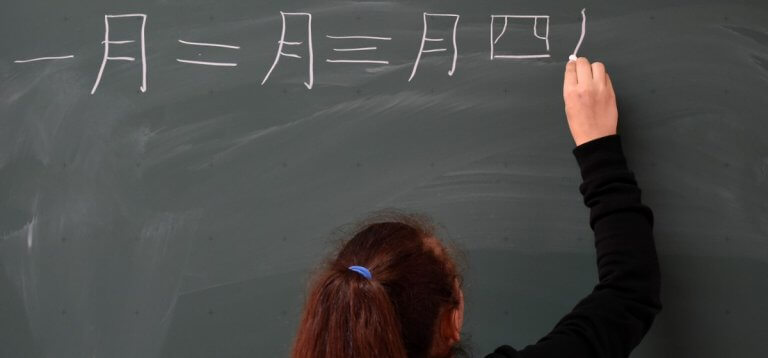
As China grows to be the world’s next superpower, schools are scrambling to implement Mandarin Chinese into foreign language curricula. UK students are increasingly taking GCSEs in this subject and in 2013, the US Department of Education reported that Mandarin was the second-most popular dual-language education programme offered by individual states, losing out only to Spanish.
Few would argue about the benefits of adding another foreign language to the school curriculum. For Mandarin Chinese specifically, such classes can prepare students to compete in a globalised world where the US and China are projected to be its two biggest players. Beyond brighter career prospects, there are shorter-term benefits including insight into one of the world’s oldest cultures, knowledge of the intricacies of the pictograms and semi-phonetic ideograms that make up its characters, as well as the opportunity to converse with the largest population in the world.
But real obstacles remain in translating these wishes into a reality that works for school children. The UK, for example, is struggling to find enough qualified teachers. Mandarin teachers recently joined the UK government’s official occupation shortage list, alongside computer science and general science. The list reveals the jobs where there aren’t enough resident workers to fill vacancies and therefore permitting easier recruitment of staff from outside the European Economic Area (EEA) with fewer restrictions.
With a severe shortage of qualified teachers, an ambitious UK government programme to increase the number of pupils learning Mandarin in schools has been criticised as being “completely unsustainable”. The four-year Mandarin Excellence Programme set out to have at least 5,000 young people speaking Mandarin by 2020 and aims to have at least 100 new qualified Chinese teachers by the end of the programme, according to a 2017 report by TES.
Speaking to TES, Carmel O’Hagan, former Head of Languages at CILT, the National Centre for Language, said: “This is completely unsustainable and that’s what really worries me. The only way for Mandarin to succeed is with a huge, huge, huge number of home-grown Mandarin teachers.
“How on earth are you going to teach a subject when there are simply not enough teachers? You don’t need a thousand teachers. You need 23,000 teachers if it is going to happen in every school.”
Being a relatively new subject among the foreign language curriculum, more research on best practices in teaching would be needed, too. Traditional “foreign” languages (French, German and Spanish) that have been around longer let teachers experiment with what works best for their school.
Mandarin, on the other hand, is relatively new and a 2016 US News report notes that less than 0.4 percent of American K12 students are currently studying Mandarin – that’s not a lot of ground for educators to collate best practices on how to teach it to English native speakers
Furthermore, Mandarin Chinese is a subject that clearly needs sustained work from students, parents and schools alike if they aim to be any good at it. A native English speaker needs roughly 2,200 hours to become proficient in Mandarin, according to the Foreign Service Institute of the US State Department. Spanish, French or any other language that uses the Roman alphabet is estimated to take around 600 hours.
Schools scheduling in one hour of Mandarin tuition per week may have good intentions, but without enough teachers, research and time, it may not be all that beneficial for young learners.
Liked this? Then you’ll love…
Here’s what Chinese students are bringing to New York tables







